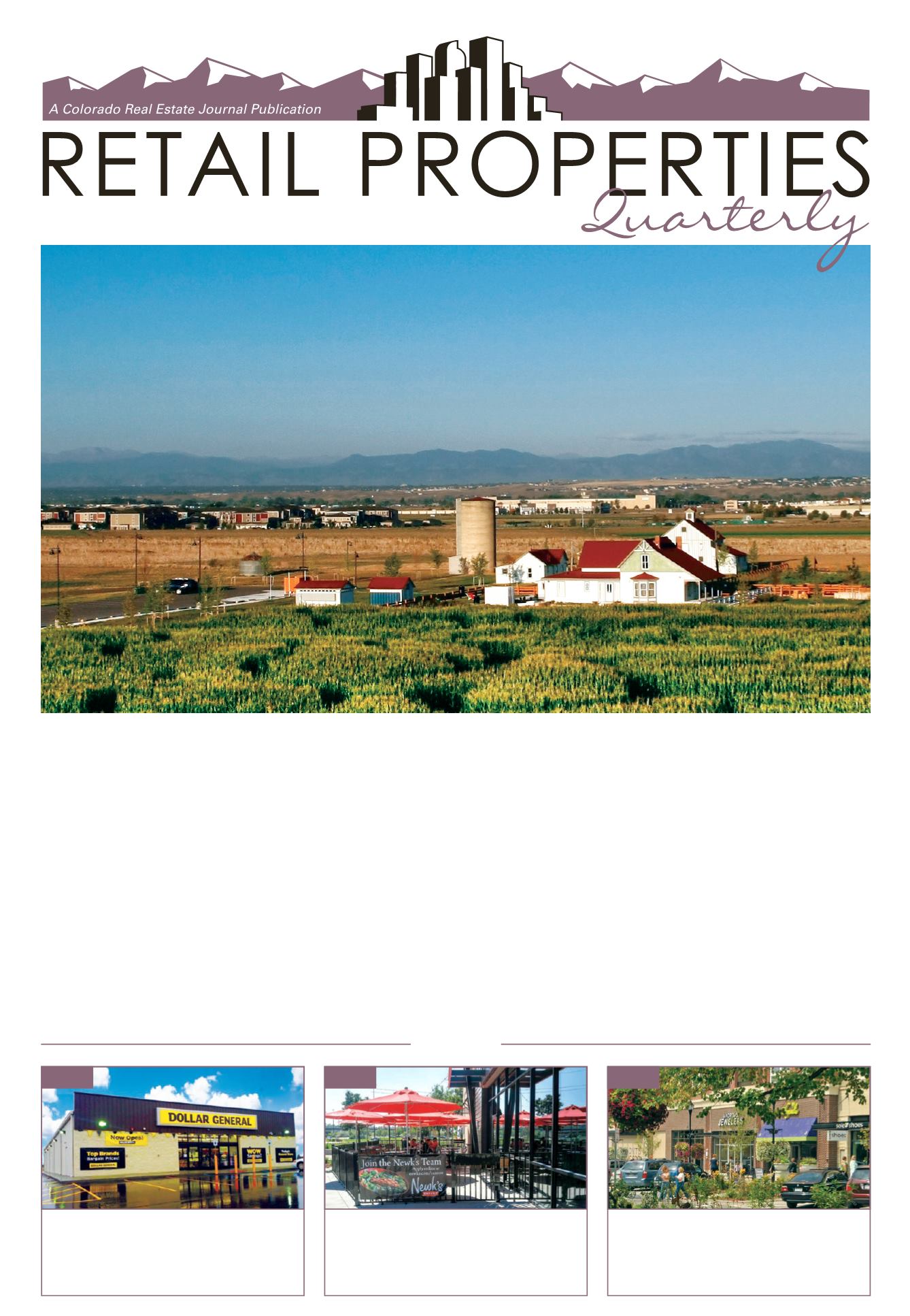
 Brighton capitalizes on
changing consumer demands
Brighton capitalizes on
changing consumer demands
INSIDE
by Michelle Z. Askeland
Two retail trends are shaping how
the city of Brighton and Adams
County prepare for future develop-
ment and community growth while
honoring the agriculture backbone
that has defined much of the area’s
culture for generations. The trends –
the retail experience placing a greater
emphasis on buying and supporting
local in tandem with consumers’
increasing demand for healthier foods
– are naturally intertwined with local
agriculture.
Nationally, the local food business,
defined as food produced, processed
and distributed within a consumer’s
community, is booming. Local food
sales grew from $5 billion in 2008 to
$12 billion in 2014, and sales are pro-
jected to reach $20 billion by 2019,
according to the Urban Land Insti-
tute’s Cultivating Development report.
In addition, the U.S. organic industry
saw an 11 percent increase in sales
from 2014 to 2015, while the over-
all goods market saw just 3 percent
growth during the same period, the
ULI report stated. Further, 73 percent
of U.S. residents said they considered
access to fresh, healthy foods to be a
high or top priority, according to the
ULI’s America in 2015 survey.
In response to these consumer
demands, we’re starting to see the
food component become more of an
anchor for real estate development
projects. New development projects
that include some sort of food-based
businesses, such as restaurants, food
halls, grocery stores and farms, bring
value, create a sense of attachment to
the development and foster stronger
community ties, the ULI report stated.
Incorporating these retailers is
proving to be fruitful for other shop-
ping center tenants as well because
they generate traffic and increase the
amount of time customers spend at
a particular retail center, the ULI and
PwC’s report Emerging Trends in Real
Estate 2016 found. For these reasons,
nonfood-related retailers are begin-
ning to request locations near “chef-
driven” restaurants.
“We’re going to see a trend where
food is going to weave back into retail
in a major way,” said Jon Beckner with
Agriburbia Development. Due to mar-
ket disruption from online retailers,
brick-and-mortar stores are blending
in social components, often in the
form of entertainment and food, he
said. “I think local products are going
to be what’s driving the market in the
future.”
Brighton/Adams County
Thanks to the proximity of Adams
County, the Denver metro area enjoys
some of the shortest food miles – the
distance food travels from where it is
grown to where it is consumed – in
the country. Many city residents might
Dollar stores are expanding in a market that is seeing many similar-sized retailers struggle. Market highlight PAGE 6 Omnichannel shopping habits are forcing retailers to rethink the in-store experience. Design trends PAGE 18 Newk's Eatery's first Colorado locations com- pleted construction on time and on budget. Retailer perspective PAGE 12 Please see Page 24 November 2017Jay Weise Photography
The area's agricultural backbone is evolving to further embrace retail trends. For example, in addition to farm production, the historic Bromley Farm in Brighton now provides tours, classes, seasonal
activities and event space.














